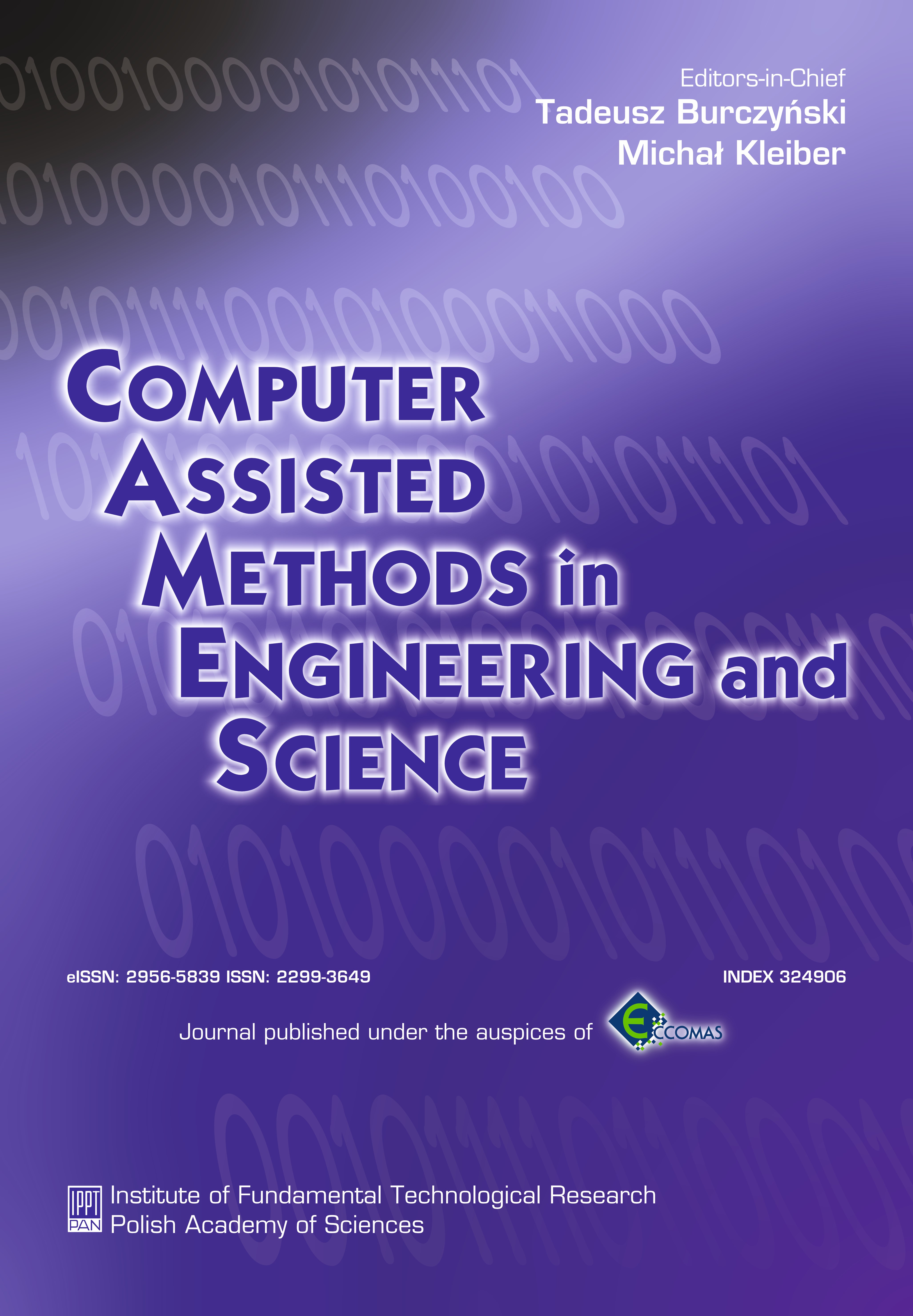Abstract
The present study investigates the impact of magnetic field on the interaction of stationary, rigid filament-like structures in biomagnetic fluid flow, which has broad applications in mixing, transport, targeted drug delivery, and the development of magnetic devices. This work focuses on modeling a stationary, rigid, inclined filament fixed at the bottom of a channel within biomagnetic flow using the immersed boundary method. The inclined filament is positioned at various angles (θ = 450, 900 and 1350) in biomagnetic flow. Numerical simulations reveal that the fluid-filament interaction exhibits increased recirculation zones downstream when influenced by a magnetic field. Interestingly, when the filament is placed at θ = 450, there is a reduction in vortex formation upstream. The study also examines the effect of parameters such as the Reynolds number (Re) and the magnetic number (Mn) on the size of vortex formation. It is evident that as the Re and Mn increase the size of recirculation zones and secondary vortex formation also increases.
Keywords:
biomagnetic fluid, rigid inclined filament, immersed boundary method, magnetic numberReferences
[2] L. Pauling, C. Coryell, The magnetic properties and structure of hemoglobin, oxyhemoglobin and carbonmonoxy haemoglobin, [in:] Proceedings of the National Academy of Science, 21, 1936.
[3] V.C. Loukopoulos, E.E. Tzirtzilakis, Biomagnetic channel flow in spatially varying magnetic field, International Journal of Engineering Science, 42(5-6): 571–590, 2004.
[4] E.E. Tzirtzilakis, Biomagnetic fluid flow channel with stenosis, Physic D Nonlinear Phenomena, 237: 66–81, 2008.
[5] M.R. Habibi, M. Ghassemi, A. Shahidian, Investigation of biomagnetic fluid flow under nonuniform magnetic fields, Nanoscale Microscale Thermophysical Engineering, 16(1): 64–77, 2012.
[6] S. Kenjeres, Numerical analysis of blood flow in realistic arteries subjected to strong non-uniform magnetic fields, International Journal of Heat and Fluid Flow, 29(3): 752–764, 2008.
[7] S.M. Mousavi, M. Farhadi, K. Sedighi, Effect of non-uniform magnetic field on biomagnetic fluid flow in a 3D channel, Applied Mathematical Modelling, 40(15-16): 7336–7348, 2016.
[8] D.K. Ravada, R. Maniyeri, Numerical simulation of two-dimensional biomagnetic shear flow, Materials Today Proceedings, 2023, https://doi.org/10.1016/j.matpr.2023.01.127.
[9] C.S. Peskin, Numerical analysis of blood flow in the heart, Journal of Computational Physics, 25(3): 220–252, 1977.
[10] M.C. Lai, C.S. Peskin, An immersed boundary method with formal second-order accuracy and reduced numerical viscosity, Journal of Computational Physics, 160(2): 705–719, 2000.
[11] R. Maniyeri, S. Kang, Numerical study on the rotation of an elastic rod in a viscous fluid using an immersed boundary method, Journal of Mechanical Science and Technology, 26(5): 1515–1522, 2012.
[12] R. Maniyeri, S. Kang, Numerical study on bacterial flagellar bundling and tumbling in a viscous fluid using an immersed boundary method, Applied Mathematical Modelling, 38(14): 3567–3590, 2014.
[13] M. Kanchan, R. Maniyeri, Numerical analysis of the buckling and recuperation dynamics of flexible filament using an immersed boundary framework, International Journal of Heat and Fluid Flow, 77: 256–277, 2019.
[14] J. Basil Eldoe, M. Kanchan, R. Maniyeri, Modeling rigid filament interaction under oscillatory flow using immersed boundary method, Materials Today Proceedings, 56(2): 785–790, 2022, https://doi.org/10.1016/j.matpr.2022.02.257.
[15] M. Kanchan, R. Maniyeri, Numerical simulation of buckling and asymmetric behavior of flexible filament using temporal second-order immersed boundary method, International Journal of Numerical Methods for Heat & Fluid Flow, 30(3): 1047–1095, 2020.
[16] D.S. Kershaw, The incomplete Cholesky conjugate gradient method for the iterative solution of systems of linear equations, Journal of Computational Physics, 26(1): 43–65, 1978.
[17] Z. Guo, B. Shi, N. Wang, Lattice BGK model for incompressible Navier–Stokes equation, Journal of Computational Physics, 165(1): 288–306, 2000.
[18] M. Coutanceau, R. Bouard, Experimental determination of the main features of the viscous flow in the wake of a circular cylinder in uniform translation. Part 2. Unsteady flow, Journal of Fluid Mechanics, 79(2): 257–272, 1977.
[19] L. Zhu, C.S. Peskin, Simulation of a flapping flexible filament in a flowing soap film by the immersed boundary method, Journal of Computational Physics, 179(2): 452–468, 2002.
[20] W.X. Huang, S.J. Shin, H.J. Sung, Simulation of flexible filaments in a uniform flow by the immersed boundary method, Journal of Computational Physics, 226(6): 2206–2228, 2007.







